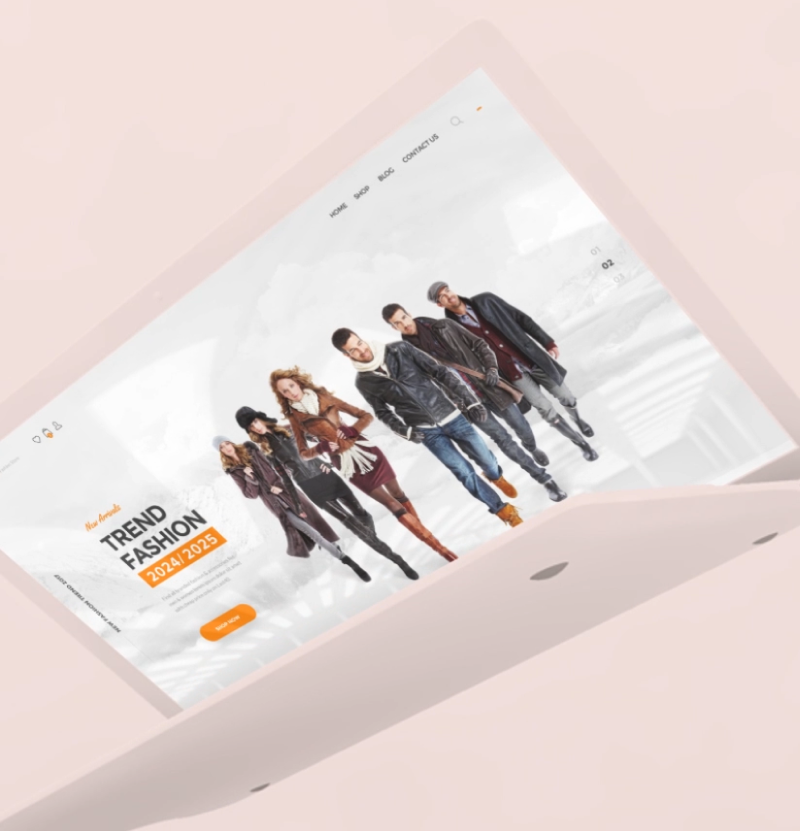
About
As a part of our Product Challenge, we often create concepts for various industries, attempting to fill gaps in the customer experience. This time, our dedication to innovation led to the creation of a mobile app concept for interior design hackers. The goal is to centralize community-shared ideas for enhancing interior design in unique ways.

Challenge
While there are many furniture manufacturers that propose affordable, functional, and minimalist designs, there’s untapped potential in the way consumers can interact with their products.
The concept of ‘furniture hacks' – where customers modify or repurpose furniture and home accessories beyond their intended use – has gained considerable popularity among DIY and interior design enthusiasts. This trend highlights a desire for personalization and creativity in home furnishing, which is not fully catered to by the standard offerings from furniture manufacturers.
Moreover, the process of room makeover and interior design can be daunting for many, especially those who lack professional expertise but desire aesthetically pleasing and functional living spaces. At the same time, there's a growing trend among consumers seeking to elevate these basic pieces into more customized and high-end looking items. This aspiration, however, often clashes with the lack of clear guidance or inspiration.
These crucial gaps in user experience prompted us to create a concept of a web app to fill them. It considers creative expression, practical solutions for room makeovers, sustainable living ideas, and community building among interior design enthusiasts. As a result, there’s a high chance of turning the process of buying and assembling furniture into an engaging, collaborative, and fulfilling journey.

Process
As our dedicated team discovered the challenges that furniture buyers face, they decided to prepare an estimation for a proposed process of turning the idea into a reality.
During a focused 2-week discovery phase, our team would embark on a creative journey. It would start with an initial workshop with brainstorming sessions for gathering all ideas. Typically, this includes defining the app's functionalities, not just as features but as vital elements of an engaging user experience.
Additionally, this phase is designed to sketch the first outlines of the app's UX/UI, turning abstract concepts into preliminary wireframes. Last but not least, it’s preliminary to shape a unique product strategy, ensuring the app would stand out in the market.
After the workshops, the focus should shift to refining the strategy and moving the ideas from the drawing board to development. Wireframes should evolve into detailed user journey maps, providing a clear vision of the app's interface. A technical feasibility study would ensure our ambitious plans were grounded in practicality.
The next step is the development phase, which should take around 8 weeks if adopting an agile methodology. Its main goal is to break down the workload into manageable 2-week sprints.Each sprint is a flurry of activity, from planning to execution, punctuated by demo sessions where the progress is shared and feedback is integrated.
Communication is key throughout this phase. We always recommend using tools like Jira, Confluence, and Slack to ensure seamless collaboration and project tracking for everyone involved.
Solution
A result of the discovery phase is a centralized digital platform – a hub for the best hacks out there, verified for safety and enhanced with tips from a furniture manufacturer. This platform isn't just about showcasing ideas; it's about fostering a community and providing a space for interaction and innovation.
Built in the form of a web application, it mimics an app's appearance and functionality but is actually a webpage. Unlike mobile apps, a web one will be easily accessible across various devices and platforms without needing to download anything. That's why we chose this solution.
An interactive section within the app allows for publishing various hacking possibilities tailored to the consumer's desired level of intervention, from simple tweaks to complete makeovers. The hacks are categorized into three distinct levels based on difficulty and the extent of modification: Primps, Hacks, and True Makeovers, with growing difficulty of execution correspondingly.
One of the unique aspects of our solution is its approach to monetization. Each idea comes with a list of necessary furniture and materials, complete with direct hyperlinks for online ordering from a specific furniture manufacturer. This seamless integration allows consumers to effortlessly purchase what they need to start their project and get it delivered right to their doorstep.
Another core feature is the search algorithm bot that's supposed to automate the process of scouring the internet for the best interior design hacks. Here's a breakdown of functionalities that both manufacturers and their customers can benefit from:
For manufacturers:
- Advanced search algorithm that automates the discovery of user-generated hacks from various online sources, simplifying content curation.
- Content approval and display that enables internal review and enhancement of discovered content before publication.
- Publication paths in two approaches – verifying and adding insights to user-generated content, or the manufacturer reproducing popular hacks with their own creative spin.
For customers:
- Diverse hacking levels
- Personalization and notifications
- Search and shop feature that facilitates searching by room or item and enables direct online shopping for materials.
In essence, this solution would transform the app concept into a synergistic ecosystem that benefits all parties involved. By using such an app, the manufacturer steps into the zero-waste PR narrative, engaging with the furniture hacking movement on its own terms and discovering new monetization avenues. Meanwhile, the customers gain inspiration for their DIY projects, enjoying the safety and added value from renowned design aesthetics. Finally, creative hackers get access to a broader audience, potentially becoming influencers with opportunities for collaborations with a global company.
Such an app would not only foster a community but also bridge the gap between a global brand, its enthusiastic customers, and innovative creators.

See other case studies
Get in touch
Have a project in mind? Send us the details and we will reach out to you with the next steps.




.png)